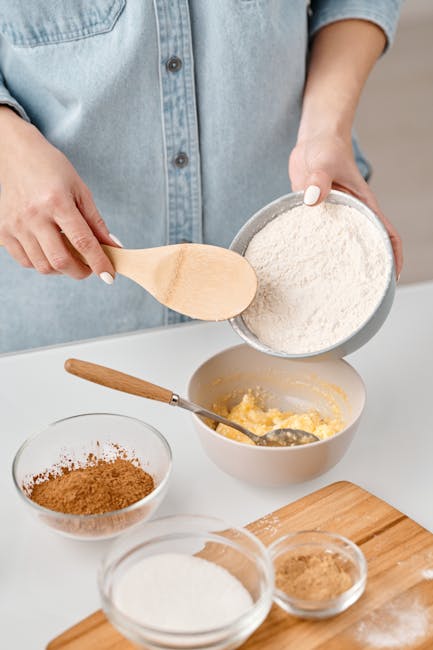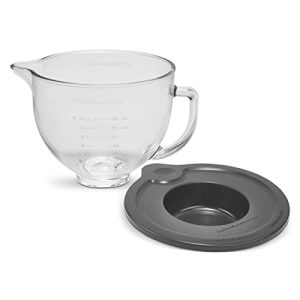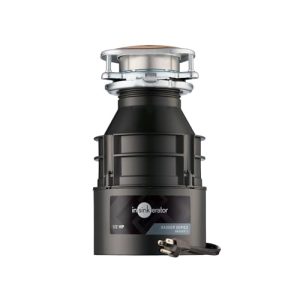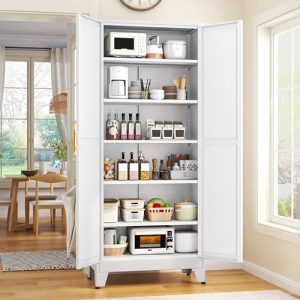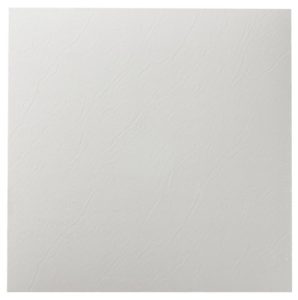If you’ve ever struggled with a stuck freezer drawer in your KitchenAid Dutch Door fridge, you know how frustrating it can be. You want to clean or fix it, but the drawer just won’t budge.
What if you could remove that drawer quickly and easily, without any damage or stress? In this guide, you’ll learn simple, step-by-step instructions to take out your freezer drawer safely. Keep reading, and you’ll save time, avoid common mistakes, and feel confident handling your KitchenAid Dutch Door like a pro.
Tools Needed
Getting ready to remove the freezer drawer from your KitchenAid Dutch Door? Knowing the right tools to have on hand makes the process smoother and saves you from frustrating moments. Having a few simple tools can help you avoid damage and get the job done quickly.
Basic Hand Tools
You’ll want a few basic hand tools within reach. A Phillips-head screwdriver is essential for loosening screws that hold the drawer components in place. A flat-head screwdriver can help gently pry parts without scratching surfaces.
Sometimes, a pair of needle-nose pliers comes in handy for pulling out small clips or connectors. These simple tools are often overlooked but make a big difference when you need precision and control.
Protective Gear
Don’t skip protective gear. Wearing gloves protects your hands from sharp edges or cold surfaces. Safety glasses are a smart choice to shield your eyes if anything unexpected happens while you’re working.
These safety measures might seem small, but they keep you comfortable and injury-free during the task. How often do you think about safety before tackling kitchen repairs?
Additional Helpful Items
Some extra items can make the job easier. A flashlight or headlamp helps you see inside the freezer cavity, especially if the lighting is poor. A towel or small container is useful for catching any drips or holding screws so they don’t get lost.
Having a clean workspace and organized tools speeds up your work and reduces stress. What tricks do you use to stay organized during home repairs?
Preparing The Freezer
Preparing your KitchenAid Dutch Door freezer drawer is key to removing it safely and without any hassle. Taking the right steps before you start ensures you protect your food, the appliance, and yourself. Let’s look at what you should do first to make this process smooth and stress-free.
Emptying The Drawer
Start by taking everything out of the freezer drawer. This includes frozen foods, ice packs, and any small containers you may have stored inside.
Leaving items inside can make the drawer heavy and difficult to handle. It also increases the risk of spills or damage to your food.
Use a cooler or insulated bag to keep your frozen items safe while you work. Have you ever tried moving a fully loaded freezer drawer? It’s surprisingly tough and messy!
Disconnecting The Power
Before you touch the drawer, unplug your refrigerator or switch off the circuit breaker. This step is crucial to avoid electrical hazards or accidental damage.
Powering down also prevents the freezer from trying to keep the temperature stable, which can cause strain on the appliance during drawer removal.
Take a moment to confirm the power is off by checking the display panel or light inside the fridge. Safety first—have you ever experienced a small shock from ignoring this step?
Locating The Drawer Mechanism
Locating the drawer mechanism on your KitchenAid Dutch Door freezer drawer is the key first step to removing it safely. Knowing exactly where the mechanism sits helps you avoid damage and makes the process smoother. It might surprise you how simple this part of the appliance is once you know where to look.
Understanding The Drawer’s Position
The freezer drawer usually slides on metal rails attached to the sides of the cabinet. These rails house the mechanism that locks and supports the drawer’s weight. You need to pull the drawer out just enough to expose these rails without forcing it, which could cause damage.
Identifying The Release Levers Or Clips
Most KitchenAid Dutch Door models have release levers or clips near the back of the drawer rails. These levers hold the drawer in place and need to be disengaged before removal. Check both sides carefully—sometimes the clips are hidden or recessed, so use a flashlight if necessary.
Checking For Additional Fasteners
Don’t assume the drawer is held solely by the rails and clips. Some models include screws or bolts securing the drawer to the frame. These are usually found underneath the drawer or inside the rail mechanism. Have a screwdriver handy to remove any fasteners you find.
Using Your Hands And Tools Wisely
You’ll want to use your hands to feel along the rails to find the mechanism. Avoid using excessive force or tools that might scratch the finish. Sometimes gently rocking the drawer side to side can reveal hidden catches or resistance points.
Releasing The Drawer
Releasing the freezer drawer on a KitchenAid Dutchdoor requires careful attention. The drawer locks in place for safety and to prevent spills. Releasing it properly helps avoid damage and makes removal easier. Follow clear steps to unlock and slide the drawer out smoothly.
Removing Safety Clips
First, locate the safety clips inside the freezer drawer tracks. These clips hold the drawer securely in place. Gently press or lift the clips to release their grip. Use your fingers or a flat tool for better control. Keep the clips safe for reinstallation later.
Sliding The Drawer Out
After releasing the clips, hold the drawer firmly on both sides. Pull the drawer straight out with steady, even pressure. Avoid tilting or forcing the drawer to prevent damage. If it feels stuck, double-check the clips are fully released. Slide the drawer out completely and set it on a flat surface.
Handling Common Issues
Removing the freezer drawer from a KitchenAid Dutchdoor is simple. Slide the drawer out, then lift it upwards gently. This method provides easy access for cleaning or maintenance.
Dealing with kitchen appliances can sometimes feel like a daunting task, especially when things don’t go as smoothly as planned. Removing the freezer drawer from a KitchenAid Dutchdoor can present a few challenges, but with a little know-how, you can tackle these common issues head-on. Whether your drawer is stuck or you’re dealing with broken parts, there are effective solutions to get your freezer back in working order.Stuck Drawer Solutions
One of the most common issues you might face is a stuck drawer. If you’ve ever pulled on a freezer drawer only to find it won’t budge, you’re not alone. A simple fix can often be to check for any ice build-up around the edges. Consider using a hairdryer to gently melt any ice that’s preventing the drawer from opening. Ensure you’re using a low setting to avoid damaging the seals. Another tip is to check the alignment. A misaligned drawer can easily catch and prevent smooth operation. Adjust the track to ensure it’s seated properly, allowing for seamless opening and closing.Dealing With Broken Parts
Broken parts can be frustrating, especially when they disrupt your daily routine. If a handle or slider is broken, it might be tempting to call in a professional. However, many parts are designed for easy replacement by the user. Start by identifying the part number, usually found in your appliance’s manual or on the manufacturer’s website. Once you have the correct part, replacing it is often a simple process. Keep a basic toolkit handy, including a screwdriver and pliers. This can make small repairs quicker and save you a service call fee. Have you ever considered keeping a few spare parts on hand? This ensures you’re always prepared for unexpected breakages, minimizing downtime.Cleaning And Maintenance Tips
Keeping your KitchenAid Dutch Door freezer drawer clean ensures it works well and lasts longer. Regular cleaning prevents bad odors and ice build-up. Simple maintenance keeps the drawer sliding smoothly and seals tight.
Follow these easy tips to maintain and clean the freezer drawer effectively. Small habits make a big difference in performance and hygiene.
Preparing The Freezer Drawer For Cleaning
Remove all food items before cleaning the drawer. Take out the drawer carefully following the manufacturer’s instructions. Place it on a clean surface for easier access. Unplug the refrigerator to avoid any electrical issues during cleaning.
Cleaning The Drawer And Seals
- Use a soft cloth or sponge with warm, soapy water.
- Wipe all surfaces inside and outside the drawer gently.
- Clean the rubber seals carefully to remove dirt and debris.
- Rinse with a clean cloth dipped in water to remove soap.
- Dry all parts completely to prevent mold and mildew.
Removing Ice Build-up
Avoid using sharp tools that can damage the drawer. Let ice melt naturally or use a hairdryer on low heat. Wipe water away to stop refreezing. Regular defrosting helps maintain drawer efficiency.
Maintaining Smooth Drawer Operation
- Check the drawer tracks for dirt and crumbs.
- Clean tracks with a vacuum or a damp cloth.
- Apply a small amount of food-safe lubricant if the drawer sticks.
- Ensure the drawer closes fully to keep cold air inside.
Reinstalling The Drawer
Reinstalling the freezer drawer in your KitchenAid Dutch Door is simple with careful steps. Proper alignment and secure placement ensure smooth operation. Follow these instructions to return the drawer to its original position.
Aligning The Tracks
Start by positioning the drawer near the freezer opening. Match the drawer’s tracks with the freezer’s slide rails carefully. Check that both sides are even and straight to avoid sticking. Gently push the drawer in, feeling for the tracks to slide smoothly. Pause if you feel resistance, then adjust the alignment slightly. Make sure the tracks are fully engaged before moving to the next step.
Securing The Drawer In Place
Once the drawer slides in smoothly, push it all the way until it stops. Check that it sits flush with the freezer front. Look for any locking tabs or clips that need to snap into place. Press firmly but carefully on the drawer edges to secure these locks. Open and close the drawer a few times to test stability. The drawer should move easily and stay firmly in position.
Frequently Asked Questions
How Do I Remove The Freezer Drawer On A Kitchenaid Dutch Door?
To remove the freezer drawer, first empty it completely. Then, lift the drawer slightly and pull it out slowly. Some models may require unlocking clips or screws. Always consult your user manual for specific instructions.
What Tools Are Needed To Remove A Kitchenaid Freezer Drawer?
Most KitchenAid freezer drawers can be removed without tools. However, a screwdriver might be necessary for some models. Check for any visible screws or locking clips. Having a flashlight helps to see inside drawer tracks clearly.
Can I Remove The Freezer Drawer For Cleaning Purposes?
Yes, removing the freezer drawer is recommended for deep cleaning. It allows easy access to clean hard-to-reach areas. Always remove food items first. After cleaning, dry the drawer thoroughly before reinstalling to avoid moisture buildup.
Is It Safe To Remove The Freezer Drawer Myself?
Yes, it is safe if you follow manufacturer instructions carefully. Avoid forcing the drawer as it may damage the tracks. If unsure, consult KitchenAid customer support or a professional technician. Proper removal prevents damage and ensures easy reinstalling.
Conclusion
Removing the freezer drawer in your KitchenAid Dutch Door is easy. Follow each step carefully to avoid damage. Take your time and stay safe. This simple task helps with cleaning or repairs. You will feel confident doing it yourself. Keep tools nearby and work in a clear space.
Now, your freezer drawer is ready for any fix or cleaning. Simple, quick, and no stress.

Sophie Hartwell is the founder of KitchenQuik.com, where she shares kitchen tips, smart cooking hacks, and the best product picks to make everyday cooking easier and more enjoyable.
